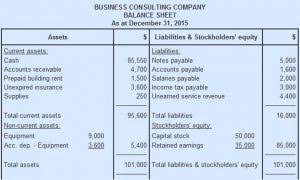
Fixed production costs were $3,000, and variable production costs amounted to $1,400 per unit. Fixed selling and administrative costs totaled $50,000, and variable selling and contribution margin income statement administrative costs amounted to $200 per unit. Similarly, we can then calculate the variable cost per unit by dividing the total variable costs by the number of products sold.

What is a contribution format income margin?
Because a business has both variable and fixed expenses, the break-even point cannot be zero. Fixed cost refers to all costs incurred by the company that does not change with the company’s level of output, i.e., they remain constant regardless of the company’s level of output. The best contribution margin is 100%, so the closer the contribution margin is to 100%, the better. The higher the number, the better a company is at covering its overhead costs with money on hand.
Would you prefer to work with a financial professional remotely or in-person?
With a high contribution margin ratio, a firm makes greater profits when sales increase and more losses when sales decrease compared to a firm with a low ratio. Where C is the contribution margin, R is the total revenue, and V represents variable costs. It represents the incremental money generated for each product/unit sold after deducting the variable portion of the firm’s costs. We handle the hard part of finding the right tax professional by matching you with a Pro who has the right experience to meet your unique needs and will manage your bookkeeping and file taxes for you. In this section, we’re going to learn how to figure out something called the contribution margin. This is a really important number that tells a company how much money is left after paying for things that change in cost, like materials to make a product.
What is the Contribution Margin Ratio?
Variable expenses are the easier to control of the two types of expenses (variable and fixed). Our mission is to empower readers with the most factual and reliable financial information possible to help them make informed decisions for their individual needs. The articles and research support materials available on this site are educational and are not intended to be investment or tax advice.
What Is the Difference Between Contribution Margin and Profit Margin?
- Variable cost refers to all costs incurred by the company that change with the change in the level of output of the company, i.e., it increases with an increase in output and decreases with a decrease in output.
- Advanced business intelligence tools are pivotal in this integration process.
- A contribution margin is a narrow view of a product or service’s profitability, but the net profit is a much wider and more comprehensive look at a company’s financial performance.
- For instance, in Year 0, we use the following formula to arrive at a contribution margin of $60.00 per unit.
- In this part, we’ll explore what a margin means when we look at income statements.
Since machine and software costs are often depreciated or amortized, these costs tend to be the same or fixed, no matter the level of activity within a given relevant range. Recall that Building Blocks of Managerial Accounting explained the characteristics of fixed and variable costs and introduced the basics of cost behavior. The company will use this “margin” to cover fixed expenses and hopefully to provide a profit.

What is your current financial priority?
Determining Variable Expenses
Unit Contribution Margin

